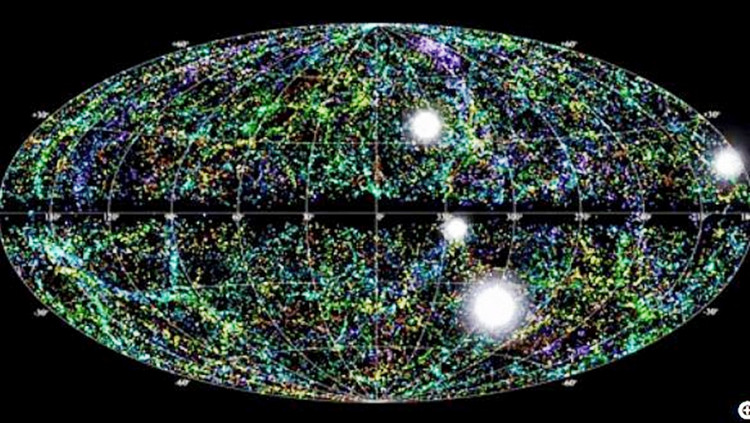Scientists are trying to find a perfectly logical explanation for a seemingly illogical repeating signal emanating from way beyond our Solar System that seems to suggest an artificial origin to some scientists.
Think of an advanced extraterrestrial civilization. But this is on the extreme end of the speculative spectrum, however.
The repeating signals detected are called Fast Radio Bursts or FRBs. A fast radio burst is a high-energy astrophysical phenomenon of unknown origin (almost definitely extragalactic) manifested as a transient radio pulse lasting a few milliseconds on average.
Several FRBs have since been found, including two repeating FRBs. The first FRB was discovered in 2007by astrophysicist Duncan Lorimer and his student, David Narkevic. Only 60 FRBs have been observed since.
Of the few FRBs discovered, it's an FRB given the designation FRB 180814 that's now in the news because it flashed not only once but six times. Astronomers on Jan. 9 announced the discovery of FRB 180814, the second repeating FRB source.
They reported six bursts were detected between August and October 2018, "consistent with originating from a single position on the sky." The detection was made during the pre-commissioning phase of CHIME or the Canadian Hydrogen Intensity Mapping Experiment.
CHIME is an interferometric radio telescope. It's located at the Dominion Radio Astrophysical Observatory in British Columbia, Canada. CHIME consists of four 100 x 20 meter semi-cylinders with 1,024 dual-polarization radio receivers sensitive at 400 MHz to 800 MHz.
Some media reports speculate FRB 180814 might be evidence of extraterrestrial intelligence, a possibility explored in relation to previous FRBs by some scientists. The team that discovered FRB 180814, however, did not hypothesize extraterrestrial intelligence as the source of this repeating FRB.
The six bursts detected from FRB 180814 registered at 400 megahertz, which is the lowest FRB frequency detected so far.
"Until now, there was only one known repeating FRB," said Ingrid Stairs, a member of the CHIME team and an astrophysicist at the University of British Columbia. "With more repeaters and more sources available for study, we may be able to understand these cosmic puzzles -- where they're from and what causes them."
There is no generally accepted explanation for the origins of FRBs. Scientists estimate the FRB sources to be no larger than a few hundred kilometers in size.
On the other hand, repeating FRBs such as FRB 180814 flash from the same spot in the sky (an estimated 1.5 billion light-years away) six times over the course of several months.
Some studies have suggested FRBs could be the remnants of distant supernovas, or radiation emitted by supermassive black holes. Others speculate FRBs might be the result of a collision between very dense objects like merging black holes or neutron stars. It's also been proposed FRBs might be related to hyperflares of magnetars.
And there's the extraterrestrial alien explanation. Avi Loeb, a scientist at the Harvard-Smithsonian Center for Astrophysics, believes we shouldn't rule out "artificial origins" like the pulses of an alien spacecraft.






